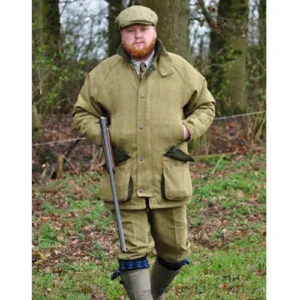Gundog training in the UK is a time-honored tradition, rooted in centuries of working alongside dogs to assist hunters. Whether you’re training a labrador to retrieve game or teaching a spaniel to flush, successful gundog training relies on consistency, patience, and the right equipment. In this blog, we’ll explore the basics of gundog training and the essential gear you need to ensure success.
What is Gundog Training?
Gundog training involves teaching a dog to work in cooperation with a hunter, typically in the field, during shoots, or other outdoor activities. The primary skills gundogs are trained for include retrieving, flushing, pointing, and tracking. It’s a specialised form of training that ensures dogs can respond to commands, work with hand signals, and stay focused on the task at hand, even in challenging environments.
The UK has a rich history of working dogs, and breeds such as Labradors, Spaniels, Springer Spaniels, and German Shorthaired Pointers are among the most commonly used. However, regardless of breed, effective gundog training requires a blend of positive reinforcement, structured practice, and the right gear.
Key Training Techniques
1. Basic Obedience:
Before diving into more complex gundog-specific tasks, your dog must master basic obedience commands such as “sit,” “stay,” “come,” and “heel.” These commands form the foundation of gundog training, ensuring your dog is well-behaved and responsive.
2. The Retrieve:
One of the core skills for many gundogs, especially retrievers like Labradors, is retrieving. This is taught using dummies or dead game, gradually increasing the distance and difficulty of the retrieval. A well-trained gundog should bring the game back without chewing or damaging it.
3. Flushing and Pointing:
Spaniels and pointers are often trained to flush game or point to its location. Spaniels are typically trained to work close to the handler and flush birds, while pointers are taught to stand still when they scent game. Both tasks require close attention to scent and sound.
4. Stop-to-Flush Training:
This technique teaches the dog to stop and hold a “sit” or “stay” position when it flushes game. This is essential for maintaining control and ensuring a successful shot.
5. Whistle Commands:
Whistle commands are used to get a dog’s attention over long distances or in noisy environments. Training your gundog to respond to specific whistle signals is crucial, especially when working in larger fields.
6. Advanced Fieldwork:
Once basic skills are in place, the next step is introducing distractions like other dogs, wildlife, or noisy environments. This ensures the dog remains focused during a hunt, even with external stimuli.
Essential Equipment for Gundog Training
The right tools and gear are crucial for both safety and effectiveness in training. Below are some of the key items you’ll need:
1. Training Dummies
Training dummies are essential for teaching retrieves, and they come in various sizes and materials. Rubber dummies are a popular choice because they float, which is particularly useful for waterfowl training. They can also be used for marking exercises, where the dog must retrieve the dummy from a designated location.
2. Whistles
Whistles are an indispensable tool for gundog training. A good-quality whistle, often with a pea or silent design, can be used for long-distance commands and recall. Whistles are particularly helpful for retrieving, where a simple blast can direct your dog’s attention, especially in large or noisy environments.
3. Lead and Slip Lead
A strong lead is essential for controlling your dog during early training sessions. Slip leads, in particular, can be useful for gundog training as they don’t have clips, which might distract the dog. Leads also help you enforce positive behavior while the dog learns new commands.
4. Field Harness
A field harness offers comfort and control when working in rugged or dense terrain. It can also help with pulling, as it distributes pressure more evenly across the dog’s body than a standard collar. Some harnesses come with adjustable straps to fit different body types, ensuring maximum comfort during long training sessions.
5. Training Vest or Jacket
When training in harsh weather conditions, it’s essential that you are comfortable as well. A good-quality training vest or jacket with ample pockets for carrying dummies, treats, and other gear can make a significant difference. Some vests are designed with waterproofing, which is essential when working in wet conditions.
6. Treat Pouch
Using treats for positive reinforcement is an integral part of any dog training program. A treat pouch or bag makes it easy to reward your dog promptly after performing a task correctly. It’s also essential for carrying training aids like dummy clips or small toys for motivation.
7. Dummy Launcher
A dummy launcher is used to simulate the sound and action of a real bird being shot. It can help with teaching your dog to respond to gunfire and work with live shooting. It also allows you to throw training dummies over greater distances, which is beneficial for long-distance retrieves.
8. First Aid Kit
Training can sometimes result in minor injuries, both for you and your dog. A first aid kit with items like bandages, antiseptic wipes, and dog-safe pain relief is a must-have for anyone working in the field. Make sure it’s easily accessible during training sessions.
Conclusion
Gundog training in the UK is a rewarding but challenging endeavor. It requires a strong bond between the handler and dog, as well as a solid understanding of both training techniques and the equipment required. Whether you’re training a retriever to work the water or teaching a spaniel to flush birds, the right gear can make a significant difference in achieving success. Remember, consistency, patience, and the right tools will help you build a well-trained gundog capable of performing at the highest level.



